Most 1966 Kennedy Half Dollars are worth $8-$11 based on their 40% silver content, with all lacking mint marks—a standard practice from 1965-1967. Standard circulation coins (108+ million minted) hold minimal value in circulated condition, but uncirculated examples can reach $300 (MS-66) to $20,000 (MS-68). Special Mint Set (SMS) coins with satin finishes are more valuable, with MS-68 Ultra Cameo versions selling for $18,500. Error coins command premium prices: Doubled Die Obverse can fetch $143-$370, struck-through errors up to $1,599, and rare Triple Die Reverse varieties listed at $814. Check NGC Coin Explorer, Greysheet, or eBay for current valuations and certified examples.
Most collectors overlook 1966 Kennedy Half Dollars, assuming they’re just common silver coins worth their melt value. But certain varieties have sold for thousands of dollars—including an SMS Ultra Cameo example that fetched $18,500 at auction. The difference between an $8 coin and a five-figure treasure often comes down to understanding specific errors, grading nuances, and the distinctive Special Mint Set coins produced during this transitional period in American coinage history.
Understanding the Two Types of 1966 Half Dollars
The United States Mint produced two distinct versions of the 1966 Kennedy Half Dollar, each with dramatically different populations and value potential.
Standard Circulation Strikes represent the vast majority, with over 108 million pieces minted for everyday commerce. These coins feature the typical frosty luster associated with business strikes and were released through banks nationwide. In circulated condition, they trade close to their 40% silver content value—approximately $8 to $9 as of October 2025 according to NGC Price Guide data.
Special Mint Set (SMS) coins tell a different story entirely. Struck between 1965 and 1967 during a nationwide coin shortage, these pieces replaced traditional proof production. The Mint created just over 2.2 million SMS half dollars in 1966—roughly 2% of the total production. These coins exhibit a distinctive satin-like finish with sharper design details and superior strike quality compared to circulation pieces.
The SMS coins command substantial premiums even without errors. An MS-68 Ultra Cameo SMS example realized $18,500 at auction, while standard MS-68 SMS pieces regularly sell for over $100. The dramatic price difference stems from their limited mintage, superior aesthetic qualities, and the technical expertise required to achieve such high preservation grades.
Complete Value Chart by Grade
The following table reflects current market values based on NGC Price Guide, Heritage Auctions, and eBay completed sales data from October 2025:
Standard Circulation Strikes:
| Grade | Value Range |
|---|---|
| G-4 to VF-20 | $8-$9 |
| XF-40 to AU-58 | $9-$12 |
| MS-60 to MS-63 | $12-$25 |
| MS-64 | $35-$60 |
| MS-65 | $75-$150 |
| MS-66 | $200-$300 |
| MS-67 | $800-$2,500 |
| MS-68 | $15,000-$20,000 |
Special Mint Set (SMS) Coins:
| Grade | Value Range |
|---|---|
| MS-64 | $15-$25 |
| MS-65 | $25-$45 |
| MS-66 | $45-$75 |
| MS-67 | $75-$250 |
| MS-68 | $100-$500 |
| MS-68 Ultra Cameo | $10,000-$18,500 |
The jump in value at MS-66 and higher grades reflects genuine scarcity. According to PCGS population reports, fewer than 200 standard strikes have graded MS-67 or higher, making these examples extraordinarily rare despite the massive original mintage.
High-Value Error Varieties Worth Hunting
Several documented error types can multiply the value of a 1966 half dollar by ten times or more, even in moderate grades.
Doubled Die Obverse (DDO) Errors rank among the most sought-after varieties. These coins display visible doubling on Kennedy’s portrait, the inscription “LIBERTY,” or the date. The Mint struck these coins with a hub that was impressed into the die multiple times at slightly different angles, creating a distinct secondary image.
The FS-104 variety shows strong doubling on the date and lettering. An ANACS MS-66 graded SMS coin with this error recently sold for $143. A standard strike NGC MS-66 DDO was listed on eBay for approximately $109.45. The rarest FS-102 variety in certified MS-68 SMS condition commands $369.95—more than triple the value of a standard MS-68 SMS coin.
Struck-Through Errors occur when foreign material—cloth fibers, grease, or metal fragments—sits between the planchet and die during striking. The resulting coin shows a raised area where the debris prevented proper metal flow. An NGC MS-64 graded SMS struck-through piece was recently listed for approximately $300, while an ICG MS-69 SMS struck-through sold on eBay for $1,599. The dramatic premium reflects both the visual appeal and extreme rarity of struck-through errors in high grades.
Die Adjustment Strikes represent perhaps the most valuable error type for 1966 half dollars. These test pieces were struck with deliberately reduced pressure as technicians calibrated the coining press. The resulting coins show weak, ghost-like impressions with incomplete design details. One example graded by NGC was listed on eBay for nearly $3,000. These pieces were never intended for circulation, making their survival genuinely remarkable.
Rotated Die Errors display misalignment between the obverse and reverse designs. On a properly struck coin, turning it upside down should show the reverse also upside down (called “coin alignment”). Rotated die errors deviate from this standard, sometimes dramatically. A 1966 Kennedy Half Dollar with rotated die error was listed for $395.89 on eBay, with the premium increasing proportionally to the degree of rotation.
The Triple Die Reverse (TDR) represents an extremely rare variety where the reverse die struck the planchet three times with slight misalignment, creating a tripled image on elements like the eagle’s feathers or lettering. A certified 1966 TDR half dollar was listed on Mercari for $814.50. Fewer than a dozen examples have been authenticated, making this one of the scarcest varieties in the entire Kennedy Half Dollar series.
Doubled Die Reverse (DDR) Errors show doubling on the back of the coin, typically visible on the inscription “UNITED STATES OF AMERICA” or the eagle’s features. While generally less valuable than obverse errors, DDR examples still command premiums. Certified examples can be found on eBay starting around $12.50, with values increasing based on the prominence of the doubling and overall grade.
The No Mint Mark Mystery Explained
Beginning collectors often wonder if their 1966 half dollar without a mint mark represents a valuable error. The reality requires understanding a specific period in U.S. Mint history.
From 1965 through 1967, the U.S. Mint deliberately removed mint marks from all coins—dimes, quarters, and half dollars. This unprecedented decision aimed to discourage collectors from hoarding coins based on mint location, which officials believed contributed to the severe coin shortage affecting commerce nationwide. During this three-year window, coins from Philadelphia, Denver, and San Francisco all lacked identifying mint marks.
Therefore, every legitimate 1966 Kennedy Half Dollar—whether standard circulation strike or Special Mint Set—has no mint mark. This isn’t an error, rare variety, or mistake. It’s the standard configuration for all 108+ million half dollars dated 1966. Any 1966 half dollar with a mint mark would represent a counterfeit or altered coin.
Mint marks returned to U.S. coinage in 1968, appearing on the obverse just below Kennedy’s neck. The absence of a mint mark on 1966 examples adds absolutely no premium to their value.
Authentication and Grading Resources
Determining whether your 1966 half dollar justifies professional grading requires access to reliable pricing and certification information.
NGC Coin Explorer provides comprehensive pricing guides updated monthly, showing auction results and dealer retail prices across all grade levels. Their population reports reveal exactly how many examples exist at each grade level, helping collectors understand genuine scarcity versus perceived rarity.
Greysheet publishes detailed wholesale and retail pricing used throughout the numismatic industry. Their printed and digital editions show bid/ask spreads for dealers, giving collectors realistic expectations for buying and selling prices.
eBay sold listings offer real-world market data for error coins and high-grade examples. Filter searches to “Sold” rather than active listings to see actual transaction prices rather than optimistic asking prices. Focus on certified examples from PCGS, NGC, ANACS, or ICG to ensure authenticity.
PriceCharting aggregates pricing data for both raw and graded coins, providing historical trends that show whether values are rising, falling, or stable. This information helps collectors time purchases and sales more effectively.
For coins showing potential errors or exceptional preservation, professional certification by PCGS or NGC is essential. The grading fee typically ranges from $20 to $50 depending on service level, which makes economic sense for any coin potentially worth $100 or more. Third-party grading not only confirms authenticity and grade but also significantly improves marketability when selling.
Maximizing Value When Selling Your 1966 Half Dollar
If your 1966 half dollar shows potential error characteristics or exceptional eye appeal, start by comparing it against certified examples online. Take clear, well-lit photographs of both sides, focusing on areas showing possible doubling, strike-through debris, or die rotation. Submit only coins with visible anomalies or gem-quality surfaces to grading services—the certification cost rarely makes sense for typical circulated examples trading at silver melt value.
For standard circulated pieces, local coin dealers offer immediate liquidity at approximately 80-90% of silver melt value. Online marketplaces like eBay provide access to collector premiums but involve fees, shipping costs, and time investment. Special Mint Set coins in original packaging should never be removed—the intact packaging adds significant value and confirms the SMS designation.
You may be interested:
- 1859 Indian Head Penny Coin Value Complete Errors List And No Mint Mark Worth Guide For Collectors
- 1911 V Nickel Coin Value Guide Complete Errors List And No Mint Mark Worth Today
- 1902 Dime Coin Value Complete Errors List With O S And No Mint Mark Worth Guide
- 1788 Quarter Coin Value Complete Guide Errors List And D S P Mint Mark Worth Revealed
- 1776 To 1976 Bicentennial Half Dollar Coin Value Complete Errors List And What Your D S And No Mint Mark Coins Are Actually Worth
- 1990 Penny Coin Value Errors List How D S And No Mint Mark Pennies Are Worth Thousands Of Dollars

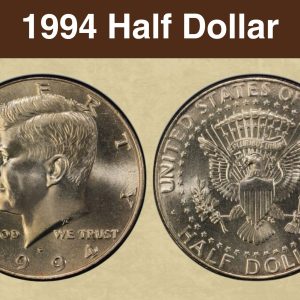
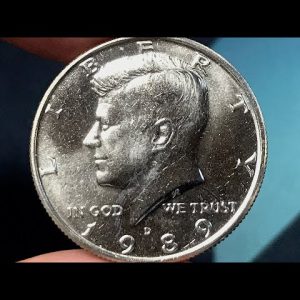
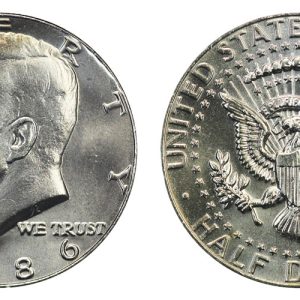
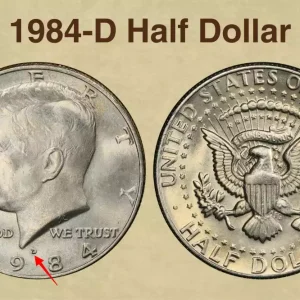
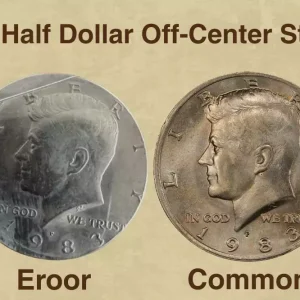
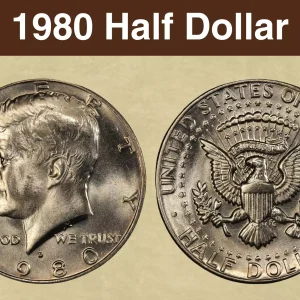
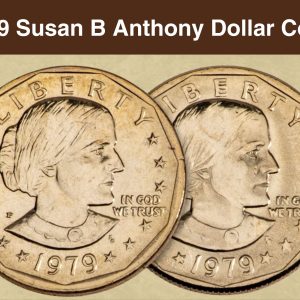
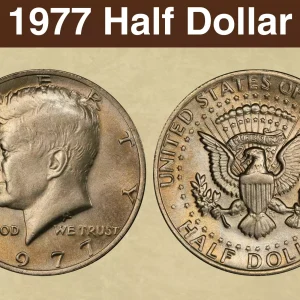
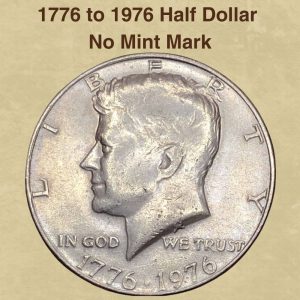
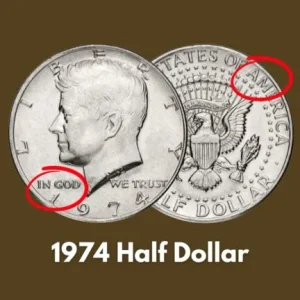
What makes a 1966 half dollar rare?
A 1966 Kennedy half dollar isn’t rare by default, but its value increases significantly if it’s a Special Mint Set (SMS) coin, exhibits a double die obverse (DDO) error with noticeable doubling on the inscription, or is in exceptionally high-grade condition (e.g., Mint State 67 or higher). Without these features, most 1966 half dollars are only worth their 40% silver content.
What errors to look for on Kennedy half dollars?
Look for common Kennedy half dollar errors such as doubled dies, off-center strikes, die breaks, and filled or missing mint marks. Specific rare errors include the 1964 “Accented Hair” variety, the 1971-D and 1977-D struck on 40% silver planchets, and 1968-S proof coins with an inverted mint mark. For recent coins, look for 2024 errors like the dropped star or die clashes.
How much silver is in a 1966 half dollar without mint mark?
This 1966 Half Dollar features a beautiful design and is made of 40% silver with a proof-like strike type. The coin has not been certified and is ungraded. It was minted in the United States and has the denomination of 50C. The coin also has a unique feature – it does not have a mint mark.